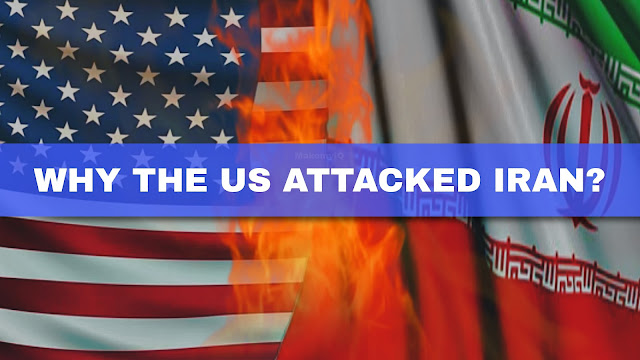In June 2025, the United States launched a powerful military operation against key Iranian nuclear sites, marking one of the most significant escalations in U.S.–Iran relations in recent history. This direct involvement came in response to growing tensions in the Middle East, especially after Israel's earlier attacks on Iran. The strike—and Iran’s immediate retaliation—have raised fears of a broader regional conflict.
This article breaks down the conflict clearly and fully, making it easier to understand the causes, events, and implications of this critical global moment.
Background: Why the U.S. and Iran Have Been on Edge
The U.S. and Iran have had a hostile relationship for over four decades. Key sources of conflict include:
-
Iran’s nuclear programme, viewed by the U.S. and Israel as a major threat.
-
Support for proxy militias, such as Hezbollah, Houthis, and groups in Iraq and Syria.
-
Ongoing U.S. sanctions, especially after America pulled out of the 2015 nuclear deal (JCPOA).
-
Regional power struggles, especially involving Israel and Gulf states.
Tensions in early 2025 were already high due to increased uranium enrichment by Iran and drone attacks on U.S. allies. The situation escalated when Israel took pre-emptive military action.
Timeline: How the Conflict Unfolded in June 2025
🛩️ June 13 – Israel Bombs Iranian Nuclear Sites
-
Israel launched precision strikes on Iranian nuclear facilities.
-
Iran publicly vowed revenge and increased military readiness.
🎯 June 21–22 – U.S. Joins with Strikes on Iran
-
The U.S. conducted “Operation Midnight Hammer”, striking:
-
Fordow (underground nuclear facility)
-
Natanz (uranium enrichment site)
-
A third site near Isfahan
-
-
B-2 stealth bombers and Tomahawk missiles were used.
-
The strikes were intended to disable Iran’s nuclear advancement capabilities.
🚀 June 23 – Iran Responds with Missile Attacks
-
Iran launched ballistic missiles toward U.S. bases in Qatar and Iraq.
-
U.S. missile defence systems intercepted all missiles.
-
No casualties were reported, but the message was clear: Iran would respond to foreign attacks.
Why Did the U.S. Attack Iran?
🎯 Key U.S. Objectives:
-
Support Israel, its close ally, after Iran threatened retaliation.
-
Prevent nuclear weapon development by destroying sensitive sites.
-
Reinforce deterrence: send a clear message that nuclear escalation will be countered with force.
-
Control regional instability, especially in the Gulf and Red Sea zones.
This was not a declaration of war, but rather a “limited precision strike” aimed at a specific threat.
Military Technology and Strategy Used
| System or Weapon | Country | Role in Operation |
|---|---|---|
| B‑2 Spirit Bomber | USA | Stealth aircraft for deep strike missions |
| Tomahawk Cruise Missiles | USA | Long-range missile launched from subs |
| Patriot & THAAD Systems | USA | Intercepted incoming Iranian missiles |
| Ballistic Missiles | Iran | Used in retaliation strikes |
Global Reactions and Concerns
🌍 International Diplomacy
-
United Nations: Called for calm and dialogue.
-
Russia & China: Criticised U.S. intervention and warned against further conflict.
-
EU Nations: Urged restraint but expressed concern about Iran’s nuclear activities.
-
Gulf Countries: Mixed reactions—concerned about instability but supportive of U.S. deterrence.
Why This Conflict Matters
-
Nuclear Non-Proliferation Threat: Iran may now fully abandon nuclear oversight agreements.
-
Oil Prices May Rise: The Gulf region is critical to global oil supply; any instability affects the world economy.
-
Cyber Threats Increase: Iran has retaliated via cyberattacks in past confrontations.
-
Terror & Proxy Warfare Risk: Groups supported by Iran may respond with attacks across the region.
Is This War?
-
Legally, no. The U.S. has not declared war, and Iran has not officially done so either.
-
Practically, yes—it is an active military confrontation with high potential to spiral into a broader war if not contained.
Conclusion
The U.S. airstrikes on Iran in June 2025 represent a significant military and diplomatic event with far-reaching consequences. While the aim was to prevent Iran from becoming a nuclear-armed state, the retaliation and ongoing tension show how fragile peace in the region remains. Understanding these events is essential for students, analysts, and citizens alike, as they reflect the complexity of global geopolitics in the 21st century.



